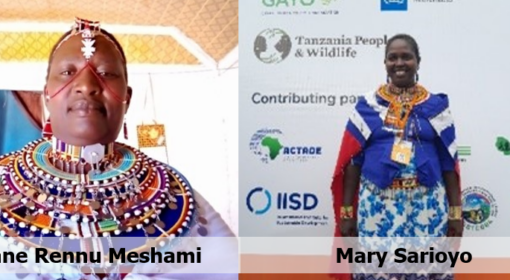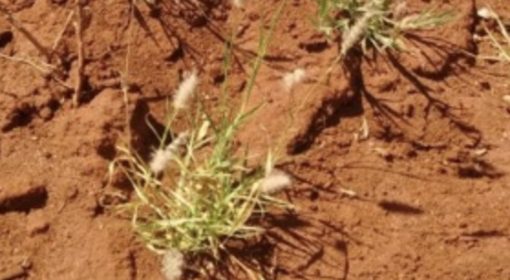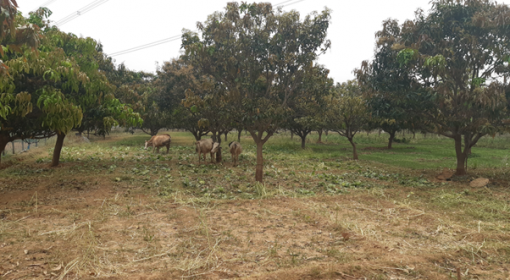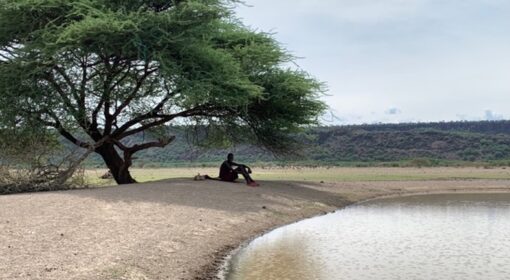By Laura Dijkstra, IMPACT NGO, supported by Nancy Kadenyi
This blog is part of a dossier on locally-led adaptation, featuring insights and lessons from the Reversing the Flow (RtF) program. RtF empowers communities in Bangladesh, Burkina Faso, Ethiopia, Kenya, and Sudan to build climate resilience through direct funding and a community-driven, landscape approach.
The Musul community, made up of herders who keep goats, cows, camels, and sheep, owns land where they have dug half-moons to support vegetation growth. However, climate change has made their land increasingly dry, leading to a decline in grass cover. This loss of grass threatens their livestock and, in turn, their livelihoods.
Through the NGO IMPACT’s RESTORE initiative, funded by Reversing the Flow, the Musul community found a way forward.
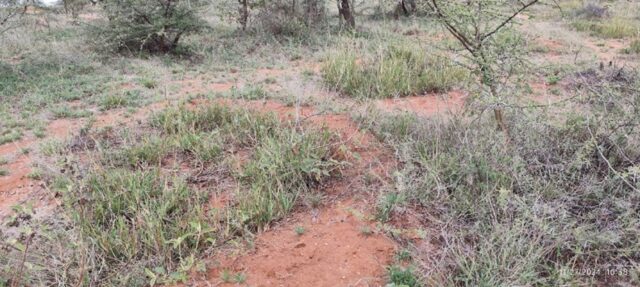
Half-Moons: A Simple, Powerful Solution
The Musul community manages 30 hectares of communal land. With support from RESTORE, they introduced an innovative technique: half-moons. Inspired by practices from elsewhere, these semi-circular earthworks feature a ridge on the lower side to capture and hold rainwater. Grass seeds are sown in the half-moons, and as water collects during rains, the grass takes root and flourishes.
Jackson Nkaiduri, the community land manager, notes the clear difference: “The soil inside the half-moons stays moist much longer than outside.” The grass roots now hold the soil together, reducing erosion. Gradually, the once-barren land has turned greener, with vegetation spreading beyond the half-moons. The contrast with adjacent untreated land is striking.
A Community-Led Effort
The transformation didn’t happen overnight. The Musul community, made up of four villages, came together to plan the project. A democratically elected management team drafted a proposal to join RESTORE. In 2023, they received approval and 1 million Kenyan shillings directly in the community’s bank account – an amount they had never seen before.
With this funding, they bought tools, grass seeds, and hired an external expert to train them in creating half-moons. Families dug the half-moons themselves, supported by food contributions from members who weren’t able to dig.
Learning and Adapting
The community faced setbacks in the first phase. Heavy rains washed away some half-moons before the grass could establish. But instead of giving up, they drew on the knowledge gained through RESTORE’s training and independently dug new ones. Technical experts they hired from the Wyss Academy provided practical demonstrations and guidance, enabling the community to manage the work independently.
An Inclusive Approach
The women in the community were also well involved in the project. They supported the project and were represented in the management team. Anne, the community manager, sees a big difference from how it was less than a year ago and is happy with the results. “The land had become beautiful,” she says contentedly. The women do not directly benefit from the half-moons, as herding livestock is a men’s task. They would have liked a kitchen garden, says Caroline. But she also acknowledges that they would have needed more money than is currently available. The rainy seasons are more unpredictable due to climate change, so the water needed for the garden is not always available. To make the garden work well, they actually need a borehole. But: creating a kitchen garden is possible, says chairman Tom Putunoi.
Lasting Impact: Grass for Livestock, Unity for the Community
Because the community was responsible for obtaining funds, making a plan, and being very involved in the implementation, members feel a strong sense of ownership of the project. Everyone had the chance to contribute. “The project is owned by the community,” says Jackson. They also proved that they could handle a large sum of money well, says Tom: “We showed everyone, also the donors, it is possible.”
The impact on the community has been very positive. The dry landscape has changed, and the livestock now has enough grass. As a result, they can sell their livestock well and feed their families. It is no longer necessary to roam.
Jackson also says that the community has learned a lot from RESTORE. For example, that doing the work themselves makes a big difference. “Normally donors do the work, now we can solve our own problems, and with less money!” he says. Tom adds: “We have learned the purpose of unity. When we come together as a community, we can do great things with our land.” Everyone is involved, including pregnant women, who cooked for those working in the field, and the elderly, who supervised.
